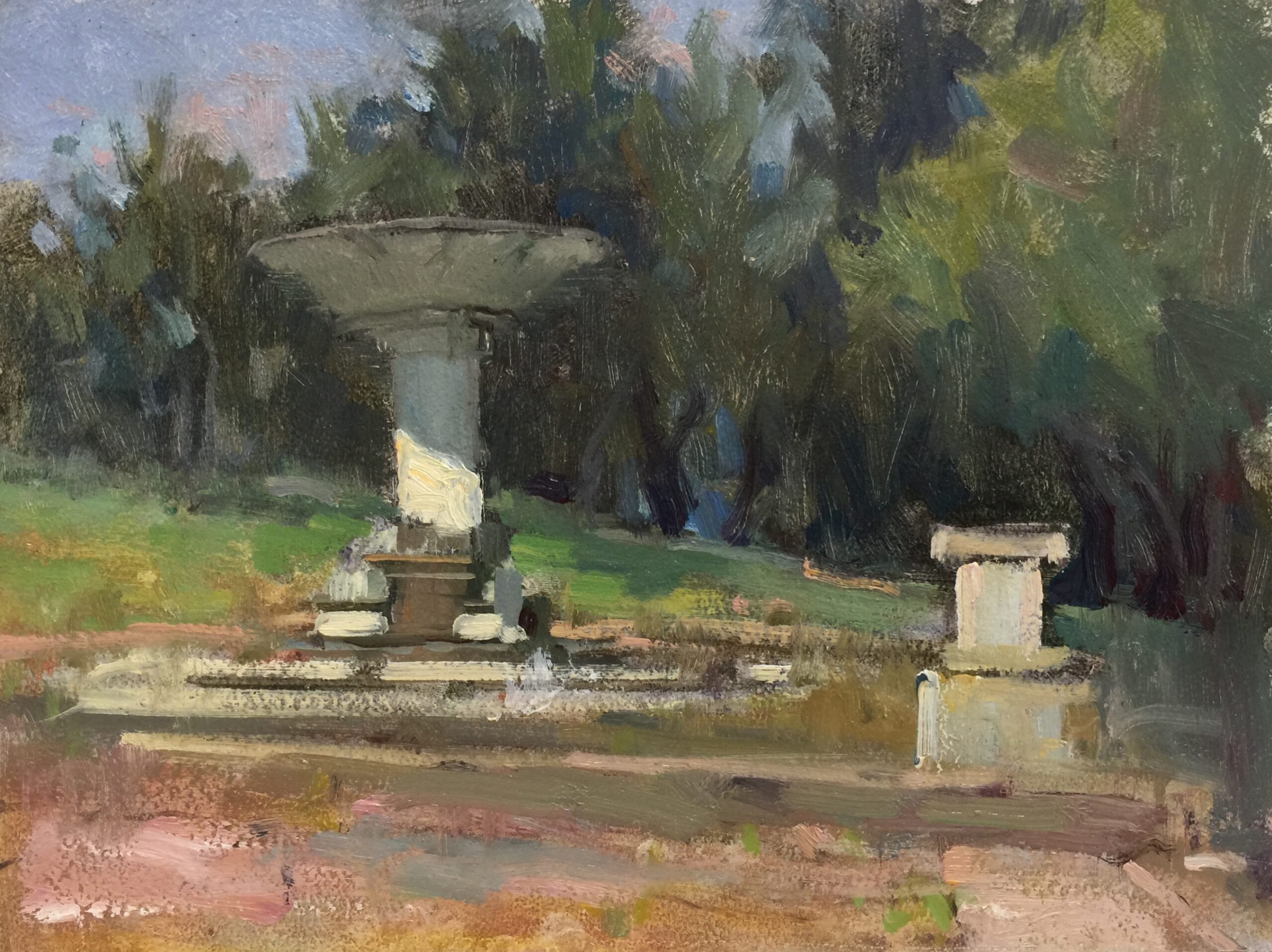
How can you paint what you see?
As a beginner it is very challenging to paint what you see. We live in a very complex visual world, and our eyes can be overwhelmed when we try to take it all in. Go into any kind of shop that is full of colourful decorations, clothing, homewares, in a variety of shapes and sizes and you will know how it feels. Try to capture one tiny part of that in your painting and it becomes even more difficult to paint what you see. This is especially true when you want to paint landscapes, townscapes and even portraits.
Take several steps back, return to your childhood for a moment, and it will help you to zone in on what is important, and how you can easily capture even complex objects by taking them down to their simplest forms.
What is the definition of shape and form in art?
The main problem in starting to paint what you see, is that you are trying to portray a three-dimensional (3-D) object on a two-dimensional (2-D) surface, whether that is paper, canvas, or board. This is not difficult, you just have to understand a few basic concepts and use some simple techniques.
What are two-dimensional shapes?
One of the first things you learn as a child is how to identify 2-D shapes, such as squares, circles, triangles, and rectangles. We learn these first because they are easy to draw on paper, recognise, and name.
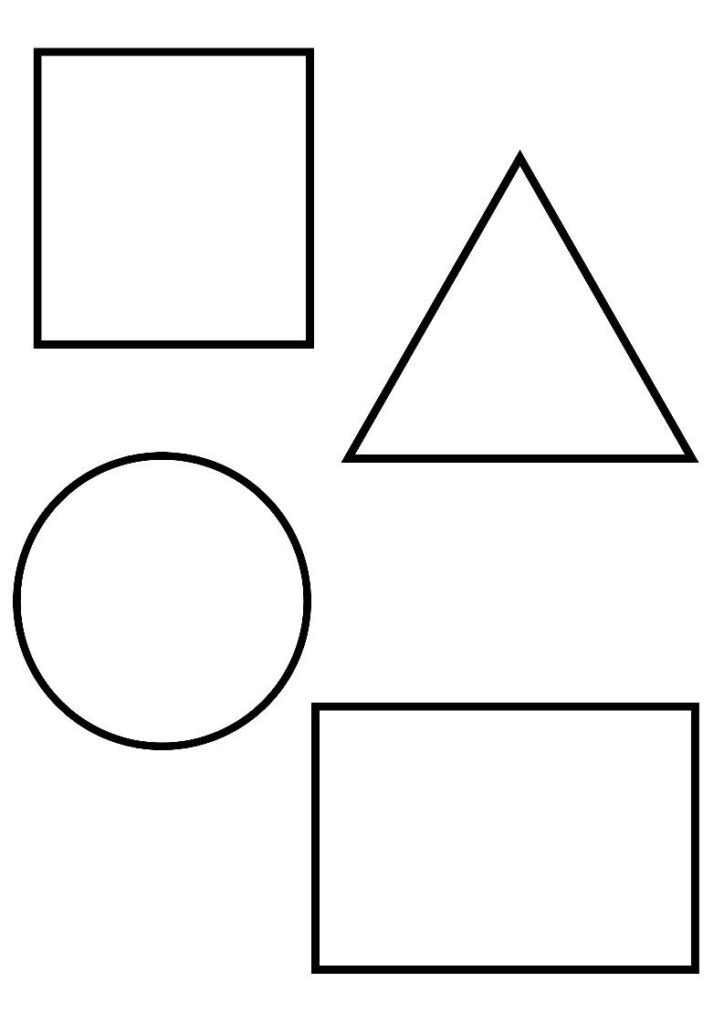
Then we learn to color them in. But although children can draw the basic 2-D shape, and then color them in, they do not know how to achieve anything other than a colored shape.
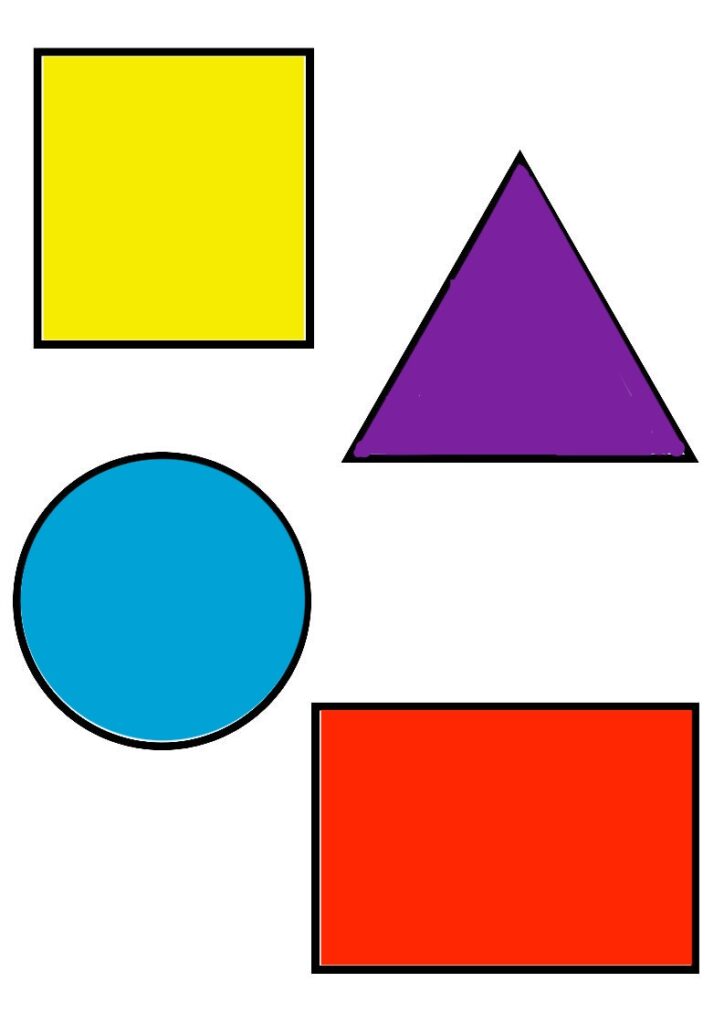
Gradually, children come to realise that these simple shapes also apply to other things in our world too, such as balls and boxes, and start to draw complex objects such a people, houses, and even animals using the basic shapes they know and understand.
By the age of 5, children use these basic shapes to represents part of a larger object. In this painting you can see the cat is drawn using two oblongs, female figures get triangular shaped dresses, and male figures have rectangular bodies and trousers. The house is a combination of a square and a triangle, and if you look closely at the roof, this child has even figured out how to make it look more three dimensional by shading the side in a different value!

This child has learned that the only way to change a shape from 2-D shape to a 3-D form is to understand how to transform it onto a 2-D sheet of paper or canvas using a variety of techniques.
How to convert shapes into forms
As you improve as an artist, you want everything you paint to look as realistic as possible, even if you don’t want to paint in a realistic style. All you have to understand is the difference between shape and form in art, and figure out how to turn a two-dimensional object into a three-dimensional object.
We can do this by imitating children when they begin to draw. The idea of converting complex objects into simple shapes is step one.
We just have to take the next step which is convert the 2-D shapes into geometrical 3-D forms. For example, a circle becomes a sphere, a rectangle becomes a box or a cylinder, a triangle becomes a pyramid.
Simplify the shapes
Most objects are complex structures, or shapes, that consist of many different types of structures combined together. If you paint the complex structure piece by piece, even though you might have all the detail, your painting will lack unity, look disjointed, and have no sense of solid form. This is because you are focusing on the small relationships before getting the large relationships accurate. The solution is to simplify all shapes before you paint them, and to establish the form on these simplified structures, before you add any detail.
You can approximate nearly all forms to one, or a combination of, the simple geometric shapes. A shape becomes a form when you understand how to paint some or all of the following:
- geometric forms
- planes of light and shade
- two-value statement
- squared off forms
- hue changes on a form
- perspective
Step one
I used the geometric forms cylinders, cones and cubes to build the fountain. To do this:
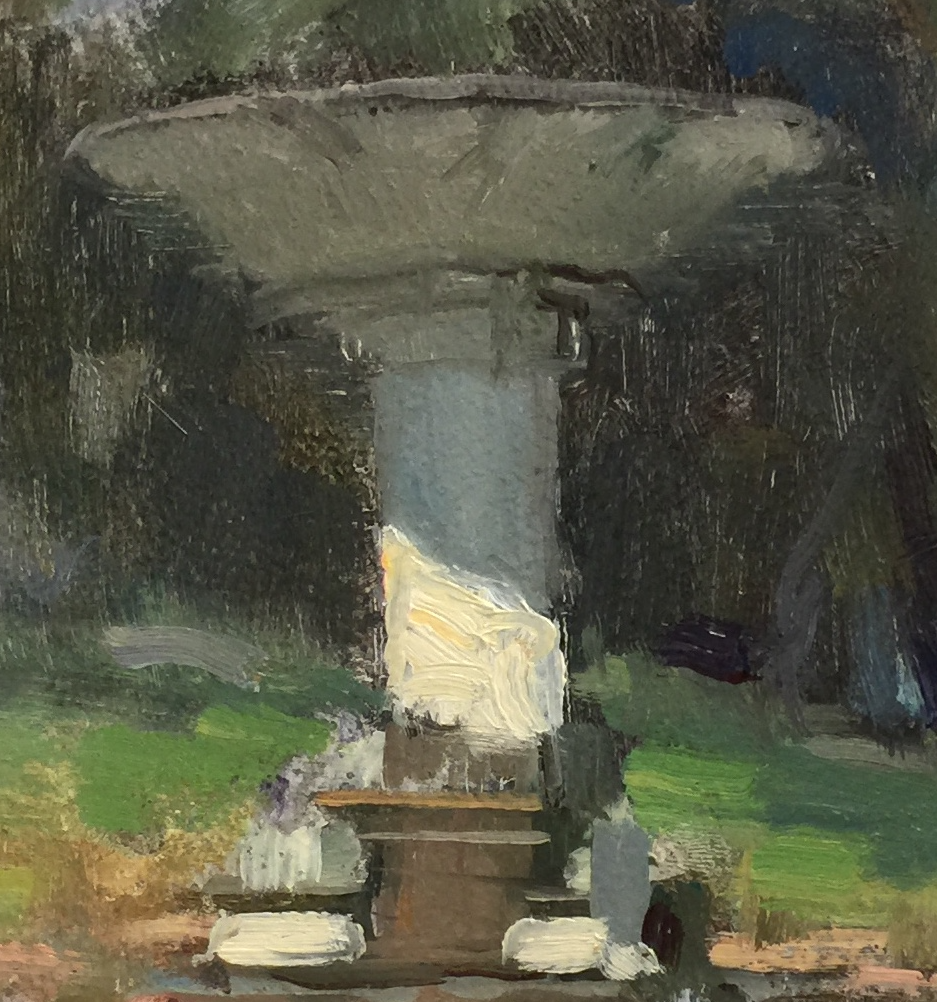
- Choose the closest geometric solid form to your subject.
- Combine two forms if necessary.
- Model and shade these simple geometric forms.
- Only now can you add refinements such as smaller geometric forms or details.
Step two
I added planes of light and shade as a two-value statement on the main column. You can see the contrast of value between the part that is in shadow and the part that is illuminated by the sunlight.
To learn more
To learn much more about how to capture objects accurately for still life and landscapes, see the Virtual Art Academy® Apprentice Program.
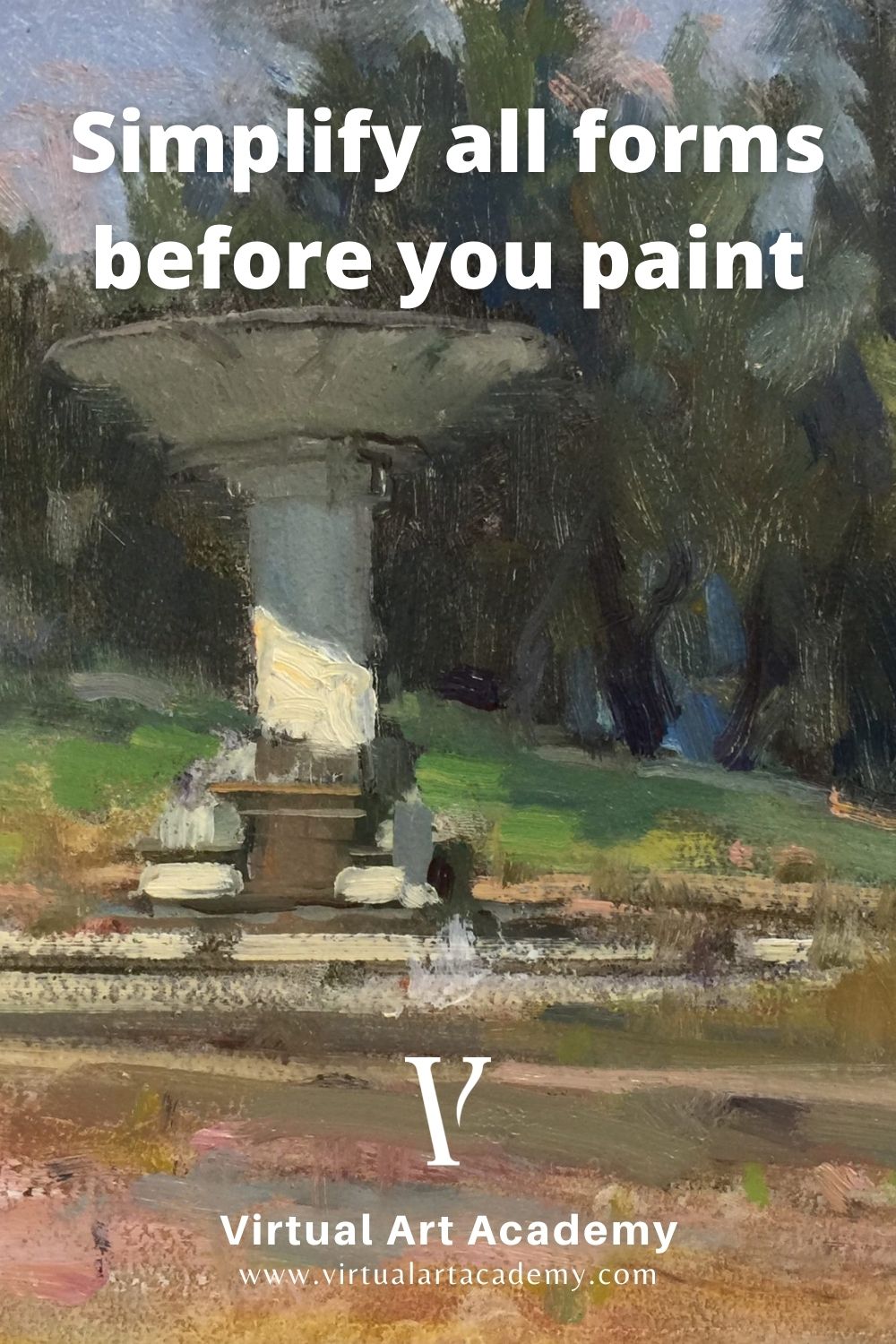
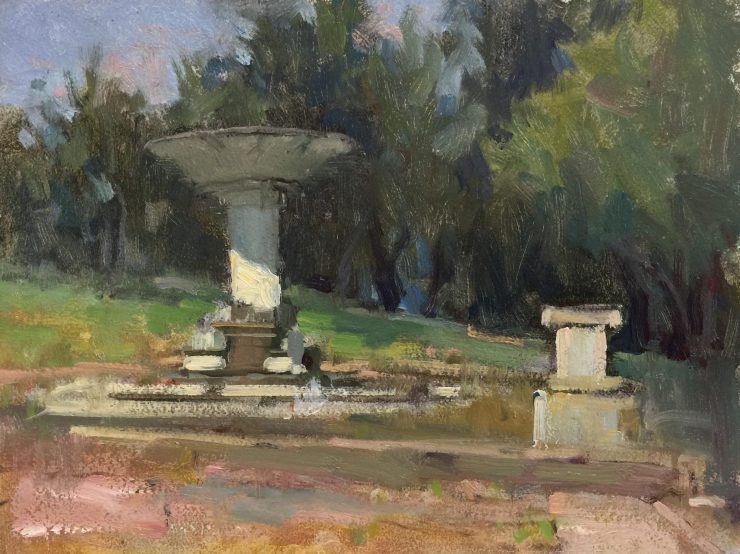
Thanks, I’m always learning and being reminded of what I’ve been taught before and forgotten….always looking forward to the lessons
These discussions are transformative. I took the whole curriculum and it is by far— by far the most insightful and pragmatic of all art instruction i found so far. It is unbelievable how barry avoids the mere painting demo and instead shows the student the actual methods to approach the challenges a painter faces with each painting
Thank you Beatrice for your comments about my approach to art instruction.
Barry